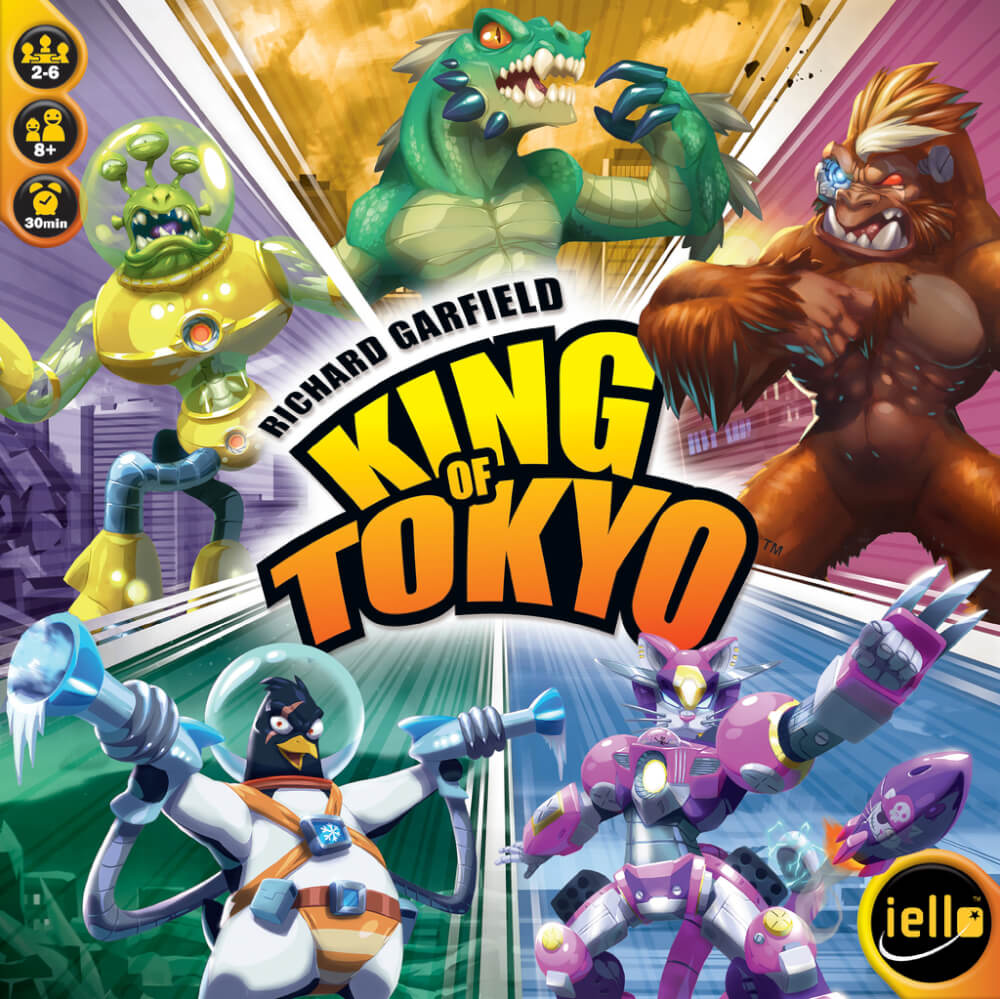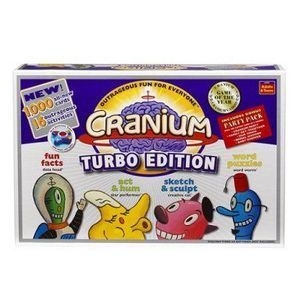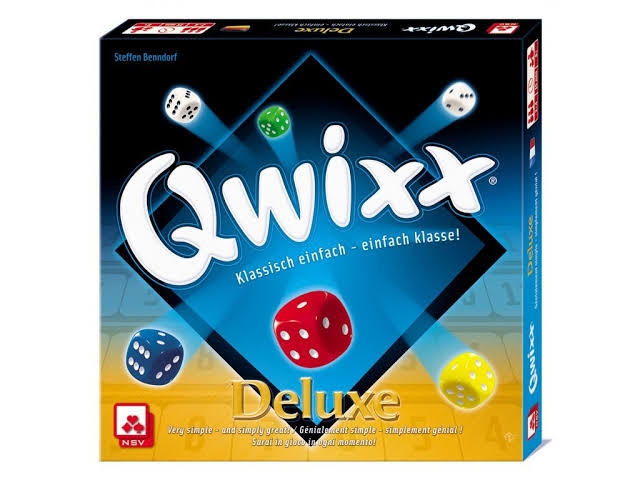
King of Tokyo
In King of Tokyo, you step into the shoes of iconic monsters and stupendous robots, all determined to conquer the city of Tokyo and ascend to the throne. The game begins with the thrilling roll of six dice, where each symbol - ranging from victory points to energy and attacks - promises strategic possibilities and surprises every round. The dynamic is quite engaging: you have the freedom to roll the dice up to two times, looking for the perfect combination to accumulate points, recover health or, who knows, strike your opponents and assert your dominance. I remember the first time I played with friends; the tension grew with each roll, and laughter erupted when someone dared to challenge the beast that had invaded Tokyo. To add to the fun, special cards acquired with energy can change the course of the match. These cards offer unique abilities, such as the formation of a second head that grants extra dice or even a devastating lightning bolt that dismantles the opponents' plan. Every choice counts! The objective? To be the first to reach 20 victory points or to be the last monster standing. King of Tokyo masterfully combines strategy and luck, creating a lively experience that will make you want to return to fight for the crown.Artists: Benjamin Raynal; Romain Gaschet
Designers: Richard Garfield;
Date: 2011
Note: 7.7
Mechanics: Elimination of players, Push your luck, King of the Hill, Data Symbol Resolution, Data Scrolling, Scroll Again and Lock
Topics: Pop or Geek Culture, Science Fiction, Fighting / Martial Arts
Table of Contents
- How to Play
- Tips for playing
- Game mechanics
- Game components
- Additional Information
OBJECTIVE OF THE GAME
Tips for playing
Here are some tips for doing better in the game King of Tokyo:
- Choose your monster wisely; each one has unique abilities that can change the game in your favor.
- Keep an eye out for power cards; they can often offer a significant advantage at a relatively low cost.
- Balance your actions between attacking Tokyo and healing yourself to extend your time in the game without risking too much.
- Manage your dice. Rolling three equal numbers may seem tempting, but don't underestimate the power of attacks and healing.
- Keep an eye on your opponents' scores, especially those who are close to winning; attack them to prevent them from getting any further ahead.
- Communication and negotiation with other players can open up unexpected opportunities.
- Don't be too attached to a fixed strategy; adapt as the game evolves.
- When you're in Tokyo, control your aggression; know when to back off before it's too late.
- Caution is essential, but audacity can be rewarded. Assess the risks before making risky decisions.
- Exploring different monstrosities in each match helps to develop a complete understanding of the game and various strategies.
- Enjoy every change and twist; unpredictability is often the best part of the game!
Video about the game
GAME mechanics
- Data Scrolling - At the start of each turn, players roll six special dice that display different symbols. These symbols are key to determining the actions and strategies available, such as attacking, healing or accumulating victory points.
- Roll Again - After the initial roll, players can choose to re-roll some or all of the dice up to two times. This mechanic makes it possible to adjust strategies based on initial results, similar to choosing an alternative route when you see the road blocked.
- Data Symbol Resolution - After deciding the final faces of the dice, the players resolve each symbol. Claw icons cause damage, hearts heal and numbers generate victory points if they occur in threes or more. It's like decoding a secret message to win the game.
- Force Your Luck - Deciding between maintaining results or risking new launches is a constant dilemma. Risk can result in big gains or big losses. It's like choosing between taking the known safe route or exploring a dubious shortcut to get there first.
- King of the Hill - There's a contest for Tokyo, where a monster inside the city gains extra points, but can't heal itself. Being in Tokyo is a risky position, reminiscent of the bravery of defending yourself at the top of a tower, in plain sight.
- Elimination of Players - Monsters with life points reduced to zero are eliminated. This adds tension and strategy, like a survival game where only the strongest can keep fighting.
- Blocking - Monsters inside Tokyo are the target of every attack, with no opportunity to retreat immediately, leaving players in a tactically difficult position. This mechanic reflects the claustrophobic feeling of being trapped in a siege, having to fight to stay alive.
Game components
See all the items in the game below King of Tokyo:
- Game Instructions
- City Board
- Set of 66 Cards
- 28 Special Markers (3 smoke, 1 limit, 12 reduction and 12 toxins)
- Set of 8 Dice (6 black and 2 green)
- 6 Monster panels
- 6 Monster Progress Markers
- 6 Monster Stands
- Around 50 Energy Cubes
Additional Information
- Ludopedia link: https://ludopedia.com.br/jogo/king-of-tokyo
- Link Tabletopia:
- Amazon Brazil link: Comprar King of Tokyo
- Amazon USA link: Comprar King of Tokyo


